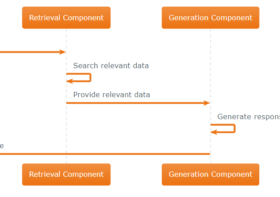MLX Unleashed: A Deep Dive into Apple’s Machine Learning Framework – Step by Step Introduction
Table of Contents

Inspired by frameworks like NumPy, PyTorch, Jax, and ArrayFire, Apple machine learning research published MLX1, an array framework for machine learning on Apple silicon.
MLX is designed by machine learning researchers for machine learning researchers.
Apple machine learning research
Key features of MLX
Familiar APIs
MLX features a Python API closely aligned with NumPy, providing a sense of familiarity for users. Additionally, it boasts a comprehensive C++ API that mirrors the Python counterpart. Higher-level packages like mlx.nn and mlx.optimizers include APIs modeled after PyTorch, streamlining the construction of intricate models.
Composable function transformations
MLX facilitates composable function transformations, supporting automatic differentiation, automatic vectorization, and optimization of computation graphs.
Lazy computation
MLX adopts a lazy computation approach, where arrays are only instantiated when required.
Dynamic graph construction
Computation graphs within MLX are dynamically constructed. Modifying the shapes of function arguments does not induce slow compilations, and the debugging process remains straightforward and intuitive.
Multi-device
MLX enables operations to run seamlessly on any supported device, presently encompassing both CPU and GPU.
Unified memory
A distinctive feature of MLX, setting it apart from other frameworks, is its unified memory model. Arrays within MLX exist in shared memory, allowing operations on MLX arrays across supported device types without necessitating data transfers.
@software{mlx2023, author = {Awni Hannun and Jagrit Digani and Angelos Katharopoulos and Ronan Collobert}, title = {{MLX}: Efficient and flexible machine learning on Apple silicon}, url = {https://github.com/ml-explore}, version = {0.0}, year = {2023}, }↩︎

Other Popular Machine Learning Frameworks
TensorFlow
- Developed by Google, TensorFlow is known for its scalability and extensive ecosystem.
- Offers a static computation graph, which can be advantageous for certain deployment scenarios.
- Has a wide range of pre-trained models and tools for deployment in production environments.
- Supports TensorFlow Lite for mobile and edge device applications.
PyTorch
- Developed by Facebook’s AI Research lab (FAIR), PyTorch is praised for its dynamic computation graph, which makes it more intuitive for researchers.
- Has gained popularity in the research community due to its flexibility and ease of use.
- Strong support for neural network experimentation and debugging.
- Features a growing ecosystem, including the PyTorch Lightning framework for streamlined research.
If AI piques your interest, you may want to explore another article I’ve written, available at https://templespark.com/why-mojo-%f0%9f%94%a5/.




Leave a Reply